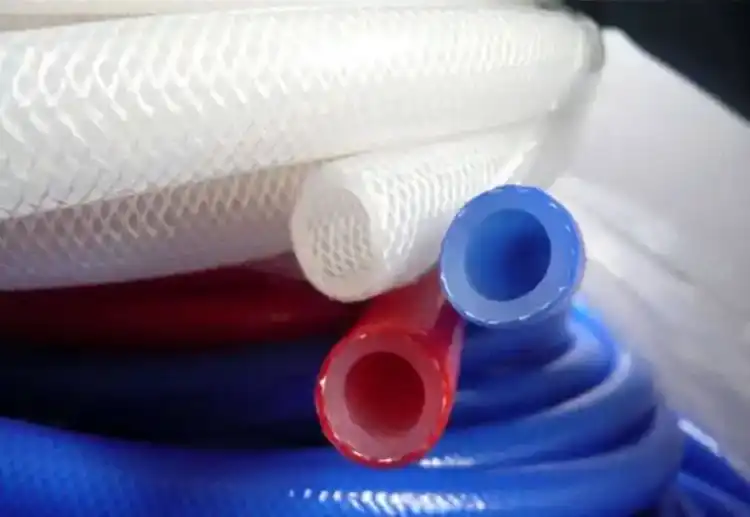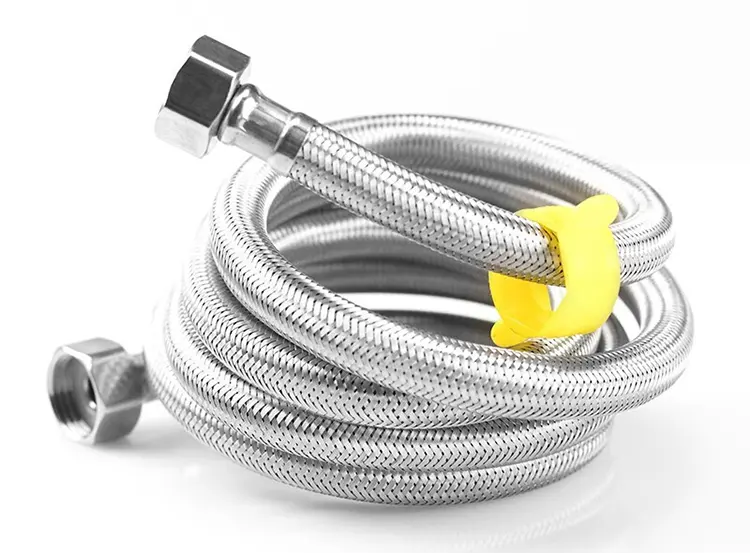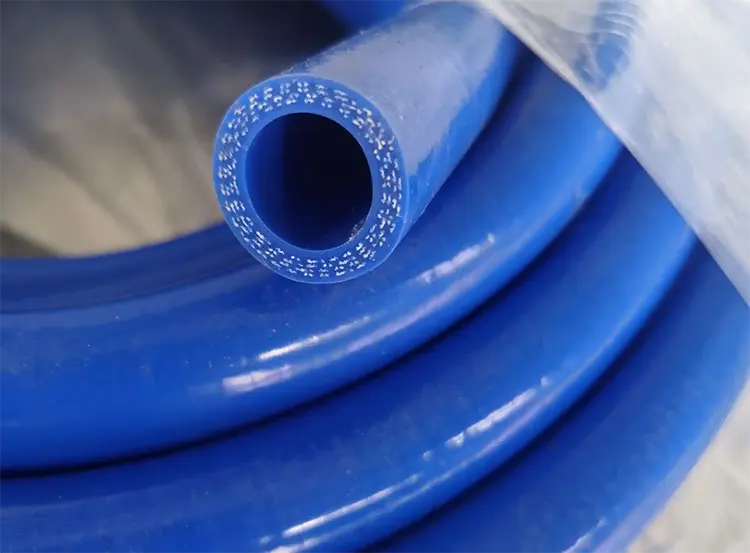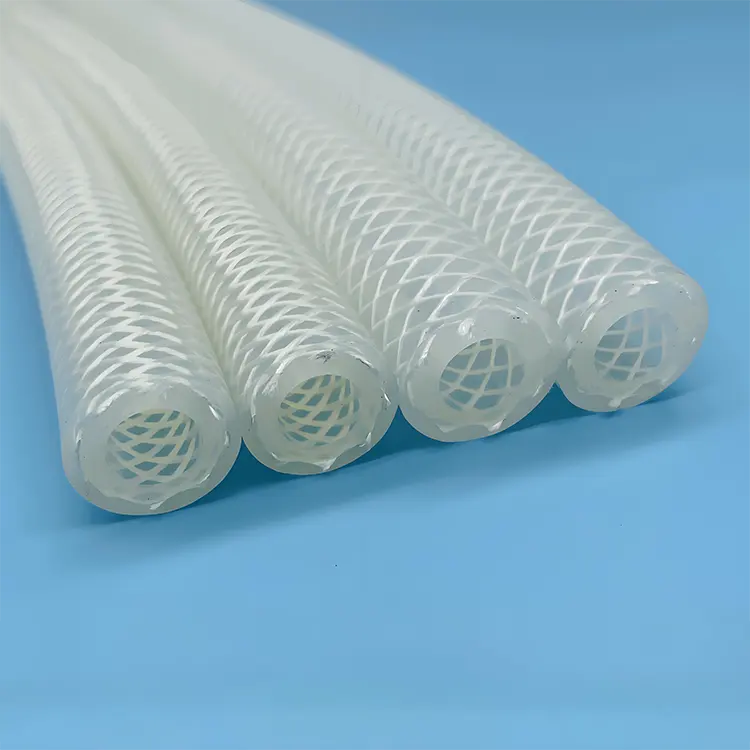Introduction
Reinforcement materials are the hidden strength behind a hose’s ability to withstand pressure and environmental stress. In industrial and hydraulic systems, where hoses are exposed to extreme forces, temperatures, and chemical exposure, the choice of reinforcement can mean the difference between seamless operation and catastrophic failure.
I’ve often seen procurement teams and engineers underestimate how much the internal architecture of a hose determines its pressure rating, durability, and compliance with global standards. Yet this “invisible layer” is where the real performance lies.
This article is crafted for industrial buyers, engineers, maintenance managers, and product designers. It will break down how different reinforcement types—textile, wire braid, spiral wire—and hose cover materials affect overall hose performance. I’ll also show you how to evaluate these factors when selecting hoses for critical applications.
Here’s what you’ll gain: a deep dive into hose reinforcement, practical comparison tables, and insights to help you choose the best solution for your system’s needs.
What is Hose Reinforcement?
The Role of Reinforcement in Hoses
At its core, hose reinforcement provides the structural strength necessary to handle internal pressures and external forces. Without it, even the most advanced inner tube materials would fail under compression or tension. Reinforcement layers prevent hoses from collapsing under vacuum, resist kinking during bending, and protect against catastrophic burst failures in high-pressure environments.
Think of reinforcement as the skeleton of a hose—it keeps everything in shape and functioning, no matter how demanding the application.
Basic Hose Construction Layers
Most industrial and hydraulic hoses share a three-layer design:
- Inner Tube – This layer directly carries the media (fluid, gas, slurry) and must be chemically compatible with it.
- Reinforcement Layer(s) – These provide the mechanical strength to handle pressure and dynamic forces.
- Outer Cover – The protective skin that shields the hose from external hazards like abrasion, UV, chemicals, and weather.
Each layer plays a critical role, but it’s the reinforcement that dictates the pressure rating and lifespan of the hose.
Types of Hose Reinforcement Materials and Constructions
1. Textile/Woven Fabric Reinforcement
Overview
Textile or woven fabric reinforcement is one of the most common methods used in low- to medium-pressure hoses. Typically made from synthetic fibers such as polyester, aramid (Kevlar), or nylon, these fabrics are embedded within rubber or thermoplastic layers to create a flexible yet strong structure.
This type of reinforcement is especially valued for its lightweight nature and excellent flexibility, making it ideal for applications where ease of handling is critical.
Advantages
- Lightweight and highly flexible, allowing tight bending without kinking.
- Cost-effective for non-critical pressure applications.
- Resistant to certain chemicals and abrasion, depending on the fiber used.
Applications
- Air and water hoses for general industrial use.
- Automotive coolant and heater hoses.
- Garden hoses and lightweight fire hoses.

2. Wire Braid Reinforcement
Single Wire Braid (1WB)
Single wire braid reinforcement consists of one layer of high-tensile steel wire braided around the inner tube. This design offers moderate pressure resistance and flexibility, making it a popular choice for hydraulic systems operating under medium pressure.
Double Wire Braid (2WB)
Double wire braid takes it a step further with two overlapping layers of braided steel wire. This construction dramatically improves pressure resistance and durability while maintaining reasonable flexibility.
Benefits
- Good flexibility compared to spiral wire reinforcement.
- Handles dynamic pressure fluctuations effectively, reducing the risk of fatigue failure.
- Provides a balance between strength and weight for mobile equipment.
Typical Applications
- Hydraulic hoses in construction and agricultural machinery.
- Oil and fuel transfer hoses for industrial settings.
- Medium- to high-pressure systems requiring reliability and ease of routing.

3. Spiral Wire Reinforcement
Construction
Spiral wire reinforcement is engineered for ultra-high pressure applications. Instead of braiding, multiple layers (usually 4 or 6) of high-tensile steel wire are wound in a spiral pattern—alternating the winding direction between layers for maximum strength and stability.
This robust construction makes spiral wire reinforced hoses less flexible than braided ones, but far superior in handling extreme internal pressures and high-impulse environments.
Advantages
- Exceptional pressure resistance, even under severe impulse loads.
- Superior kink resistance, preventing hose collapse during tight bends.
- Longer service life in demanding applications due to enhanced structural integrity.
Applications
- Heavy machinery like excavators and loaders.
- Ultra-high pressure hydraulic systems in mining and oil & gas operations.
- SAE standards: 100R12, 100R13, 100R15.
Hose Cover Materials and Their Impact
Common Cover Materials
The outer cover of a hose does more than provide a neat finish—it’s the first line of defense against environmental damage that could compromise the reinforcement underneath. Common materials include:
- SBR/NBR Rubber: Offers general-purpose performance with good oil and abrasion resistance.
- EPDM: Excellent for ozone, weather, and heat resistance; ideal for outdoor applications.
- PU (Polyurethane): Delivers high abrasion resistance and chemical durability in tough environments.
- PVC Coatings: Lightweight and cost-effective, suitable for light-duty chemical resistance.
Cover’s Role in Protecting Reinforcement
A damaged cover can quickly lead to reinforcement failure. The cover shields textile fibers or steel wires from:
- Abrasion during routing and handling.
- Corrosive chemicals and oils.
- UV rays and moisture that can degrade materials over time.
Key point: Even the strongest reinforcement is vulnerable if the hose cover isn’t matched to the environment.
Reinforcement and Hose Performance: The Relationship
Pressure Ratings
The type of reinforcement directly determines a hose’s maximum pressure capacity:
- Spiral Wire: Handles ultra-high pressures (often exceeding 6,000 psi).
- Wire Braid: Suitable for medium to high pressures (up to 5,000 psi).
- Textile: Best for low to medium pressures (typically below 1,000 psi).
Flexibility Comparison
- Textile Reinforcement: Highly flexible, ideal for tight bends and compact systems.
- Wire Braid: Moderate flexibility with good routing capability.
- Spiral Wire: Least flexible but excels in high-pressure applications.
Durability and Lifespan
Reinforcement choice also affects resistance to fatigue, abrasion, and kinking. Spiral wire reinforced hoses generally last longer in extreme duty cycles, while textile hoses may wear faster under constant high stress.
Performance Table Example
| Feature | Textile | Wire Braid | Spiral Wire |
|---|---|---|---|
| Max Pressure | Low | Medium | Very High |
| Flexibility | High | Medium | Lower |
| Weight | Light | Medium | Heavy |
| Common Use Cases | Air/Water | Hydraulics | Heavy Equipment |
Standards and Certifications Related to Hose Construction
Key Standards
To ensure safety and performance, hoses must meet stringent industry standards. Some of the most recognized include:
- SAE J517: Specifies requirements for hydraulic hoses (e.g., 100R1, 100R2, 100R12).
- ISO 1436: Covers rubber hoses and hose assemblies for hydraulic applications.
- EN 853 & EN 856: European standards for wire-braided and spiral-wire hydraulic hoses.
These standards define parameters like burst pressure, impulse cycles, and dimensional tolerances, ensuring hoses perform reliably under expected operating conditions.
Why Compliance Matters
Using hoses that comply with international standards protects your system and operators:
- Safety: Reduces risk of catastrophic failures in critical applications.
- Reliability: Ensures consistent performance across varying environments.
- Regulatory Approval: Many industries (oil & gas, construction, aerospace) require certified components for legal and insurance purposes.
Choosing the Right Hose: Practical Considerations
Key Factors to Evaluate
When selecting a hose for your system, consider these critical factors:
- System Pressure and Temperature: Match the reinforcement type to peak operating conditions.
- Flexibility Requirements: Does your system demand tight bend radii? Textile and braided hoses offer more flexibility than spiral wire.
- Environmental Conditions: Assess exposure to oils, UV, chemicals, and abrasion—this will influence your choice of cover material.
- Standards Compliance Needs: Always verify that the hose meets relevant industry standards for your application.
Example Scenarios
- Excavator Hydraulic System: A spiral wire reinforced hose (SAE 100R13) would be ideal for high-pressure, high-impulse environments.
- Food-Grade Water System: A textile-reinforced hose with EPDM cover may suffice, balancing flexibility and chemical resistance.
Pro tip: Consult your hose supplier early to discuss application details—they can recommend the optimal construction for your needs.
Common Hose Failures Related to Reinforcement
Typical Failure Modes
Even with high-quality materials, improper selection or maintenance can lead to reinforcement-related failures:
- Bursting: Caused by using hoses with insufficient reinforcement for the system’s pressure.
- Wire Corrosion: When the outer cover is damaged, moisture and chemicals can corrode steel braid or spiral layers.
- Fabric Delamination: Repeated flexing or chemical exposure can cause textile layers to separate from the rubber matrix.
Prevention Tips
- Perform regular inspections to detect cover abrasions, cracks, or swelling early.
- Replace hoses showing signs of reinforcement damage before catastrophic failure occurs.
- Choose reinforcement based on duty cycle—heavy use environments demand spiral wire or double braid constructions for safety and longevity.

Conclusion
Hose reinforcement materials and cover constructions aren’t just technical details—they are critical to the performance, safety, and longevity of your systems. Whether you’re specifying hoses for a low-pressure air line or a high-impulse hydraulic system, understanding the interplay between reinforcement type, cover material, and environmental factors will help you make informed decisions.
Summary: Textile reinforcement offers flexibility for light-duty use, wire braid balances strength and maneuverability, and spiral wire dominates ultra-high pressure environments.
If you’re unsure which hose reinforcement is right for your application, I’m here to help. At Kinsoe, we specialize in custom-engineered hose solutions that meet the toughest industry standards. Let’s work together to design a hose that delivers the performance and reliability your system demands. Contact me today to get expert guidance and a solution tailored to your needs.

